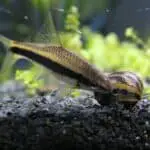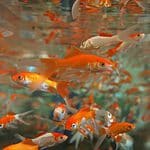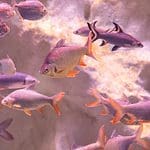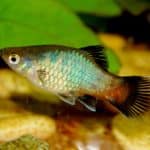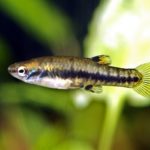Do you want to spice up your aquarium? If yes, adding some floating aquarium plants is a great way to do just that! Not only do these plants help create a stunning underwater landscape, but they also provide numerous benefits for both fish and their environment.
Floating aquarium plants offer shade and shelter, helping your fish feel safe and secure in their home. Along with this peace of mind, these plants act as a natural filter to remove toxic compounds in the water.
But there’s one small catch: these aesthetically pleasing additions typically require strong light to survive, thereby creating challenges for some aquarists.
Keep reading to find out which floating aquarium plant is right for you and how best to care for them.
What are Floating Aquarium Plants?
Floating aquarium plants have roots that do not settle in any type of substrate. They are very interesting plants, bringing a certain movement, depth, and texture to the aquarium.
The plant’s submerged part is small and composed of a spongy tissue called aerenchyma. This tissue helps in the buoyancy of the plant.
Moreover, these plants absorb large amounts of organic matter and compounds, such as nitrate and phosphate. Research proves their efficiency in water treatment, with some species even removing heavy metals from the environment.
In aquariums or lakes, in addition to guaranteeing water quality, their roots provide shelter for fish and fry, helping the formation of microfauna, such as infusoria.
These plants are resistant and easy to care for, bringing countless benefits to your aquariums. Your only requirement is the need for light. After all, they evolved to be buoyant to get as much sunlight as possible.
Most species come from tropical locations, but nowadays, they are considered invasive in much of the world.
The Benefits of Floating Plants for Your Tank
Floating plants are great allies for the aquarist in the maintenance of their aquariums, and their presence may be considered almost mandatory in some setups, like in biotope-type aquariums.
Beautiful and functional, they complement the decoration, making the environment much more natural while ensuring the removal of much of the organic matter present in the water.
Notably, they are species with a great ornamental factor, either by their roots or leaves and flowers. In addition to beauty, these plants have many uses that we will discuss next.
Shade and Cover
For the most part, floating plants have a large area of contact with the air. They evolved that way to absorb as much sunlight as possible. In aquariums, we can use this evolutionary adaptation to our advantage.
The leaves and roots of the plants will block the passage of most of the light in the places where they are positioned; this creates areas with different light incidences in the tank. In addition to the incredible visual aspect for the aquarist, fish benefit from this feature, especially those that prefer darker areas.
Having different environments in the aquarium means an environment closer to the natural one, giving the fish and invertebrates the ability to choose.
Oxygen & Food
Floating species have a high photosynthetic rate. This means that they are constantly breathing and producing oxygen.
They move along the water flow and create small ripples, which break the surface tension of the water. These small breaks in surface tension create more gas exchange points in the aquarium.
On their own, these plants are a treat for herbivorous species like Goldfish.
Plants in the aquarium create a microenvironment (and food) that help different species of microfauna to thrive. Among many others, we can mention algae, Paramecium, rotifers, and infusoria. This microfauna can be loose or associated with biofilm, a junction of plankton with algae and bacteria.
The loose microfauna is an essential food for the fry of different species such as livebearers, tetras, and even adults of small fish like some Rasboras and Killifish.
The biofilm that forms on the roots and underside of the leaves is used as food by several species, mainly cichlids, plecos, and Corydoras.
Nutrient and Algae Control
It is not by chance that floating plants are increasingly being used in water treatment and even sewage. These vegetables can remove toxic chemical compounds from the water. Among these compounds are those that deteriorate the water quality of aquariums, such as phosphates and nitrogen.
Unlike other plants, because of their high photosynthetic rate, floating plants have a high rate of removal of these unwanted compounds.
They also rely on the fact that they accumulate solid organic material in their roots, taking advantage of it in their metabolism before they enter directly into the nitrogen cycle. Because these plants are highly efficient, they are great to be used with the filtration system, controlling the number of pollutants in the water.
By reducing the amount of these free compounds in the water, there are not enough nutrients left to be used by opportunistic plants such as algae. That way, aquariums with floating plants are less likely to suffer from algae outbreaks.
Read also: 25 Best Algae Eaters for Your Freshwater Aquarium
Maintain and Stabilize Water Chemistry
Removing unwanted compounds from the water is automatically kept stably within the ideal conditions for the aquarium.
You must continue with periodic maintenance and water changes. Because they are constantly carrying out photosynthesis, these plants remove a lot of minerals from the water so that they can cause abrupt acidification in the tank. These minerals are replenished during partial water changes.
Low Maintenance
It is important to note that floating plants are low maintenance. They do not require pruning, maintenance of specific parameters, application of CO², or fertilization. They need nothing but water and light to be always beautiful and proliferating.
Given that these plants remove so much nitrogen, phosphate, and organic matter from the tank, they also make your water changes and cleaning more sparse, reducing the need for maintenance on your tank.
The 10 Best Floating Aquarium Plants for Fish Tanks
There are many species of floating plants for aquariums. Most species are large plants, unsuitable for most home aquariums. However, there are countless other species of small floats, equally efficient and perfectly adaptable to different sizes of aquariums.
Most of these plants grow quickly and, if left unchecked, will dominate the entire surface of the tank.
We are now going to cite 10 low-maintenance species that you can easily find available for sale in retail stores and also among hobbyists.
Wolffia
It is one of the smallest floating plants, with leaves that do not exceed 1 millimeter, both in length and height. They are small plants, great for use in small aquariums.
It has an oval shape, fast growth, and no roots. Because they are plants with good protein content, they are great food for numerous fish species.
It is not a very demanding plant concerning light, and medium lighting is enough.
Lemna
Another small plant reaches up to 3 millimeters. The plant is composed of 2 to 3 oval leaves joined together, with a root that can grow to around 1 inch. It grows quickly and takes over every surface if left unchecked.
It also serves as food for several species and is a great refuge for microfauna. It doesn’t have a great demand for light, you’ll be able to keep them under medium lighting.
Azolla
A beautiful plant with a peculiar shape. This plant reaches up to 1.2 inches and forms tiny straight branches, around 3 to 15 “arms”. These arms are composed of triangular, overlapping leaves, giving the plant a scaly appearance.
Its root reaches up to a little less than 0.8 inches in length. This plant requires a medium to strong light incidence, and it proliferates in a short time. It is not a plant that is usually eaten or pinched by fish.
They are so prolific that they pile up on each other when they don’t have the space to reproduce horizontally.
Spirodela
It is a discreet and simple plant. With leaves that vary from 0.2 to 0.3 depending on the species, they have rounded leaves with a light green color, which, under the strong presence of the sun, can acquire reddish tones.
Always in pairs, trios, and sometimes quartets, this plant is not as prolific as another. In addition, it has a delicate texture, it can break when handled. With many roots up to 1.2 in, it usually requires medium lighting and serves as food for many aquatic animals.
Salvinia
One of the most well-known and common floating plants in the aquarium hobby. It is not a large plant; its leaves reach up to 1.4 in, depending on the species. The branches from which they originate may have a considerable length, up to 6 inches.
These plants need strong lighting and are hardly bothered by fish but by snails. Its roots can reach up to 4 in.
These plants are spectacular filter feeders, capable of aggregating solid material and harboring microfauna. It is a fast and constant propagation plant.
Phyllanthus fluitans
A species that has been gaining popularity in recent times. The main feature is its reddish coloration that develops when exposed to strong lighting. With leaves up to 1 inch long and velvety in appearance, they are fragile to the touch and are rarely attacked by animals.
With roots that are also reddish and in the form of tufts, they are great for harboring fingerlings and microfauna. It is a demanding plant in terms of lighting. It has slow to moderate growth.
Limnobium
They have green, spherical leaves up to 4 inches long. Its roots reach up to 4 in in length. This plant has the peculiarity of launching stalks and leaves above the water, becoming similar to an Anubia, in addition to fixing its roots in the substrate (if it is within reach).
Of medium growth and not very strong lighting requirement, it is an outstanding plant that draws attention for its size compared to others. Fish rarely eats it, but its roots serve as a hiding place for fry and
Eichhornia
One of the best-known aquatic plants, it is invasive in almost all countries with a tropical climate.
They are large plants, being able to form large clumps more than 1 foot in diameter. They present a beautiful inflorescence with colors ranging from blue to purple, reaching 6 inches in size.
It is a plant with high efficiency in contaminated water treatment. It grows quickly and is great for providing refuge for fish and microfauna.
Pistia striatoides
Another species is known to remove large amounts of polluting compounds from water. The thin and long decorative roots provide a good hiding place for surface fish, as well as being excellent for the shelter of fry and even a great nursery.
Its leaves are light green, with a velvety texture. This plant even has medicinal properties. The plant develops quickly, producing seedlings for side shoots. Requires intense light.
Ludwigia sedioides
Incredibly ornamental plants, some species produce leaves that form round portions resembling murals or mosaics.
They have solitary flowers of relatively large size. It reproduces continuously and needs medium to strong light.
Tank Setup for Floating Plants
Floating plants are very easy to maintain, but that doesn’t mean there isn’t a perfect tank type for them.
Selecting Suitable Tank Mates
When placing floating plants in aquariums, you must keep an eye on the fauna that makes up the tank. Herbivorous fish like Carp and Goldfish will quickly eat all the plants. Putting fish and other animals that interact and use the plant is interesting, so you bring incredible natural air to your aquarium.
Uaru, Silver Dollars, Pacu, Leporinus, and some species of Mystery Apple snail should be avoided, as they are herbivores known to eat all plants in an aquarium.
Fish like Bettas, Guppies, Killifish, and Cardinal Neon Tetras, as well as shrimps, make great tank mates. These animals will actively forage on plant roots, use them to lay their eggs, and their fry will use them as a food source and hiding place.
Incorporating Lighting
Lighting is key to providing these plants with their ideal conditions. Provide light fixtures for planted aquariums or high-intensity light bulbs. If you have fish that prefer low-light environments, don’t worry, the plants will provide enough shade for them not to be disturbed.
Because of the shading and low risk of algae, you can even use the sun directly on them, this way, they will grow fully, and many of them will develop a red hue on their leaves.
If you choose to use the sun, be aware of variations in water temperature.
Selecting the Right Filter
The filter is an important part of the aquarium setup. A too strong filter will constantly pull the plants towards its entrance, always getting clogged. Filters such as HOB will throw the plants into the water column, depending on the height of the waterfall.
The ideal for floating plants is to have a filter with a low water flow. One way to control the movement of plants and minimize accidents with the filter is to isolate them in a circle made with an aquarium hose. So they will always be stuck in that place, and you can leave this circle away from the inlet or outlet of the filter.
Going Lidless or Hoodless
Covered aquariums trap moisture between the water surface and the cover. This high humidity can cause the plants to rot. In addition, some species grow to great heights, and the cover will be in their way, hindering development.
Ideally, keep your floating plants always in aquariums without covers. That way, they can fully develop in size without the risk of rotting due to the high humidity trapped in the region.
Caring for Floating Plants
Although floating plants have a great ability to filter water, and they need these nutrients to grow, you should continue with their periodic maintenance.
Maintenance will replace the minerals removed by the plants, leaving the pH and hardness stable. And it will also avoid the great accumulation of organic matter.
For sure, your maintenance will be more spaced. To find out the new frequency with which you should change the water and clean the tank, conduct tests in the water.
Where to Buy Floating Plants
The vast majority of available species of these floating plants are easily found for sale in aquarium stores. Online stores usually have a wide range of species available. As much as floating plants are used in ponds and fountains, stores specializing in these plants don’t usually have a wide variety.
Because they reproduce a lot, people with these plants often donate or even throw away countless seedlings. You can search forums and groups in your area that keep floating plants and ask for some individuals.
Floating Aquarium Plants FAQS
As easy as these plants are to maintain, it is common to have some doubts about them.
Do floating plants oxygenate the water?
They oxygenate the water indirectly since the amount of oxygen produced during photosynthesis is used later and reverted to CO². Indirectly, the movement of plants on the surface will provide greater gas exchange in the aquarium water, which means a greater increase in oxygen levels.
Do floating plants stop algae?
They don’t stop algae growth. Because they are immersed, they get the CO² from the surface.
Will floating plants block light?
Because they are on the surface, they block most light from entering the water column.
Is it okay to have too many floating plants in an aquarium?
No. Too many floating plants can interfere with maintenance and light penetration (if plants are in the substrate) and decrease the space the fish have to swim freely.
References
Hillman, W. S., & Culley, D. D. (1978). The uses of duckweed: The rapid growth, nutritional value, and high biomass productivity of these floating plants suggest their use in water treatment, as feed crops, and in energy-efficient farming. American Scientist, 66(4), 442-451.
Hui, T. S. (2005). Leachate treatment by floating plants in constructed wetland. Master’s Thesis, Universiti Teknologi Malaysia, Malaysia.
Koleszár, G., Nagy, Z., Peeters, E. T., Borics, G., Várbíró, G., Birk, S., & Szabó, S. (2022). The role of epiphytic algae and grazing snails in stable states of submerged and of free-floating plants. Ecosystems, 25(6), 1371-1383.
Liu, J., Chen, X., Wang, Y., Li, X., Yu, D., & Liu, C. (2016). Response differences of Eichhornia crassipes to shallow submergence and drawdown with an experimental warming in winter. Aquatic Ecology, 50(2), 307-314.
Mudge, C. R. (2018). Propagation methods of submersed, emergent, and floating plants for research. J. Aquat. Plant Manage. 56s, 2-9.
Petrescu-Mag, I. V., & Gavriloaie, C. (2019). The invasion mediated by aquarium hobbyists in the case of water lettuce, and Pistia stratiotes. Advances in Agriculture & Botanics, 11(3), 144-147.
Bunkar, K., Garg, C. K., Gurjar, U. R., & Takar, S. Common Aquatic Plants: A Brief Introduction.
Shen, C., Zhao, Y. Q., Liu, R. B., Morgan, D., & Wei, T. (2019). Enhancing wastewater remediation by drinking water treatment residual-augmented floating treatment wetlands. Science of the total environment, 673, 230-236.

